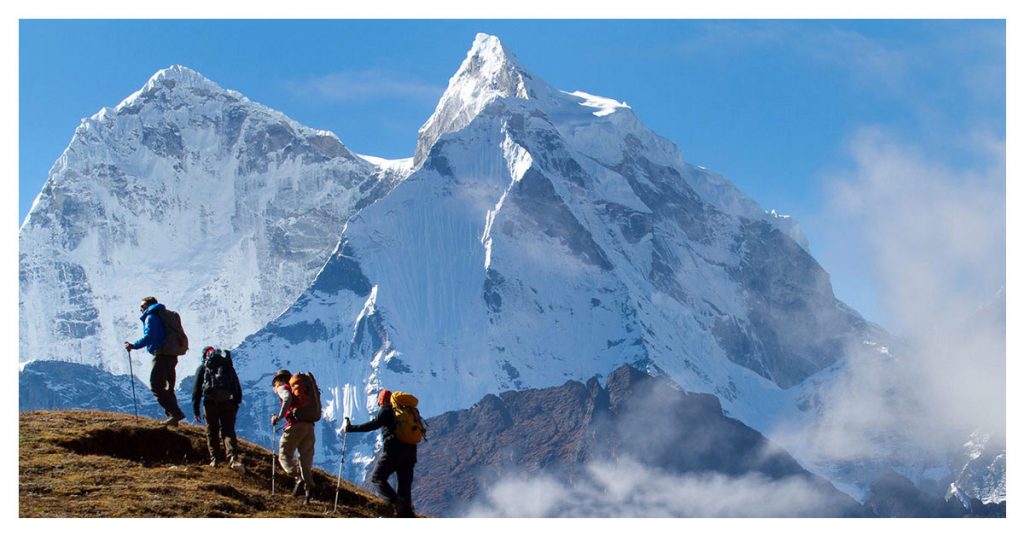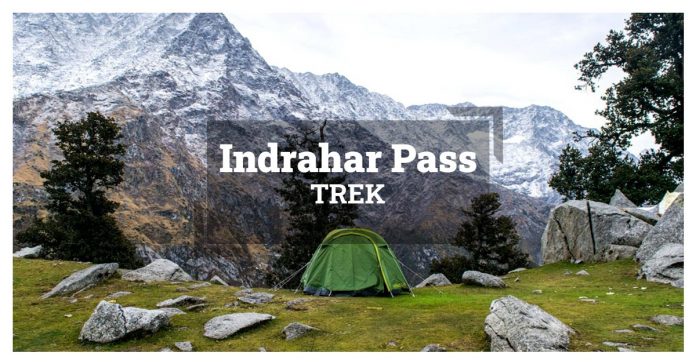Trekking has become a popular hobby among young people and adventure seekers. India is frequently regarded as a trekker’s heaven due to the great range of Himalayan terrains.
In India, one may trek by getting a package from any trekking organisation, or one can venture to trek on his/her own, which is a more daring way to play in the lap of mother nature, and this is why we always recommend performing an individual trip. The benefit of taking a package is that you don’t have to worry about logistics and other things like mules, guides, tents, and so on. The organiser organises everything. You only need to pay the requisite fee and wait for the journey dates to be announced. If you undertake it on your own, you must arrange for a guide, rations, tents, and so on. Of course, it is a bit of an effort and a difficult work, but as the phrase goes, “attempts make the destination more attractive,” thus trekking on your own may provide you with a unique experience and a genuine adventure sense that you cannot get from going on a trek with any community/organization. It is also less expensive than travelling with a trekking group unless you are not going on an adventure.
The Indrahar Pass Trek in Himachal Pradesh is one of the most breathtaking treks in the Indian Himalayan region, with calm lakes, deep gorges, dazzling streams, stunning landscapes, and deodar forest along the route that blows many visitors’ minds of all ages. The trek runs from a height of 2,875 metres to 4,425 metres and is a beautiful blend of different environments and traditional Himachal hues. The Indrahar Pass connects Kangra and Chamba districts and offers a breathtaking view of the Dhauladhar range as well as a sight of the hamlets below. It also reveals the serene waters of Lake Mankiani and Lake Kareri. Nonetheless, the black boulder road traces of the Dhauladhar and rhododendrons, as well as a diverse spectrum of avifauna at various altitudes, enliven the journey and capture the hearts of passengers.

The Indrahar Pass trip, one of Himachal Pradesh’s easy to moderate treks, begins at McLeodganj, the Dalai Lama’s residence, and ends in Triund at 2,875 metres. The hike to Triund through Dhramkot village and Galu Devi provides a breathtaking view of Dharamshala town and Kangra Valley below. The route from Triund to Lahesh Cave through Laka passes through a boulder-strewn grassland. The journey for the day begins at Lahesh Cave, trekking across the rocks straight on the North-East face of the ridge, maintaining the steep wall of Mon to its right. The route continues over the peak, passing through multiple ascents. The view from the pass is breathtaking. In a blue haze, the Kangra valley and the far plains of Punjab lay to the south, while wave upon wave of peaks rises, including Manimahesh to the northeast, Bara Bangahal to the east, Kishtwar to the west, and the Pir Panjal to the north. The route continues down to Chhata, crossing through an untamed creek and over a black rock before emerging into a gorgeous valley filled with a variety of wildflowers. The path from Chhata snakes to Kuarsi through Kuarsi Nala branches off at Brehi en route to Lamu, followed by Donali. Brehi serves as the entry point to Minikiani Lake, and the route takes you through a deep forest via Drakund. After passing Minikiani Lake, the path travels to Kareri Lake, then to the Kareri camp, and finally to McLeodganj through a downward climb.
Highlights of the Indrahar Pass Trekking Tour
- Visit the lovely Chamba Valley.
- Staying at a camp/guest house/hotel for the night
- Lahesh Cave, a natural rock shelter, is a great place to camp.
- Views of prominent summits such as Arthur’s Seat (4525 m), Moon (4666 m), and others.
- Clear vistas of the Pir Panjal and Dhauladhar mountain ranges
When is the best time to visit Indrahar Pass Trek?
From May through mid-October

Snow on high passes is possible in the early months of the year, although it melts quickly by August. During the monsoon season, the Kangra and Dhauladhar ranges are impacted by rain, although in the high elevations, the weather is warm and bright (12-20 °C) during the day, whereas the night temperature can be in the negative (-2 to 6 °C). Trekkers should expect nice weather and little snowfall in September and October. With the arrival of October, the day temperature is staying about 12-18 °C, but the overnight temperature drops from (- 6) to 4 °C.
Where is the Indrahar Pass Trek located?
Indrahar is a mountain pass in the Himalayan Dhauladhar range, at an elevation of 4342 metres (14245 feet) above sea level. The pass is famed for its walking paths, although it is primarily a border that separates the famous Himachal Pradesh districts of Kangra and Chamba. The best time to hike to Indrahar Pass is between May and October.
Preparation for the hike:
The trek’s difficulty rating ranges from moderate to challenging. Except for a few spots, the trek to Ilaqa Pass is simple. It becomes more difficult as you approach closer to Ilaqa Pass. It is preferable that you begin exercising at least two weeks before the journey dates to build your stamina and endurance as well as to strengthen your muscles. Thigh and leg exercises are essential since your legs play a significant part in travelling. If the legs are gone, it’s game over.
It is advised that you practise yoga poses such as “kapalbhati” and “alom vilom” to avoid breathing difficulties at higher altitudes.
This hike does not require any special permissions or forest permits. Bring your picture ID with you to display at the checkpoint at Galu Devi Temple. Liquor is not permitted to be transported, so don’t bring it.
Things to bring:
- Water bottle
- Energy supplements (juices, chocolates)
- Trek Map
- Rucksack cover
- Mattress (if you are bringing tents)
- Warm jacket (during winters)
- Sunglasses
- Sunscreen Lotion
- Hat
- Poncho/raincoat
- Volini spray
- Trekking shoes (hiking shoes will also work)
- Trek pant
- Powerbank
- LED torch
Things to keep in mind:
If it’s raining, don’t forget to build a moat around the tent. This aids in the removal of water from around the tent.
Bring only a little amount of food and eatables with you. Galu Devi shrine, Snowline cafe, Triund, Magic view cafe, and Ilaqa pass all have shops/huts where you may have an omelette, dal rice, tea, Maggi, and other foods. So bring only water and a modest amount of energy supplements such as juice, chocolate, and so on.
There is no need to carry a tent. Tents are offered for 500 per night for one person at Ilaqa Pass, Snowline Cafe, and Triund. You can hire it from your city if you want a cheaper choice. It costs roughly $200-400 per day for 2-3 people to stay. Dome tents are less in weight and more sturdy than alpine tents.


